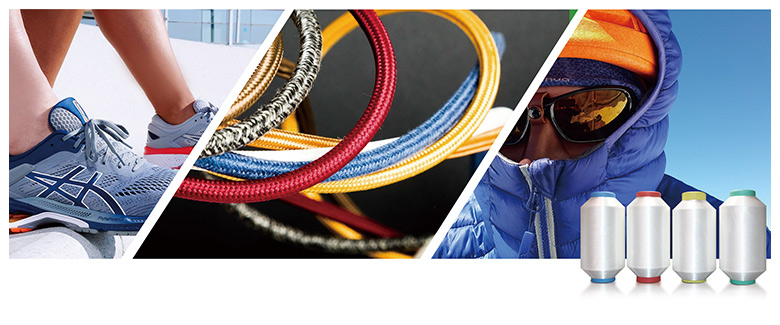- The low melting point characteristic of nylon thermal fuse empowers innovation in the textile industry
- The 2025 International Textile Innovation Conference is about to be held in Keqiao
- Will the prices of Christmas clothing around the world increase?
- Nylon thermal fuse is an innovative material for multi-field bonding solutions
- The 2025 Textile and Apparel Growth Brand Conference was held in Changshu
- Nylon hermal fuse helps stabilize the shape of textile fabrics, achieve seamless connection and functional innovation

- Contact: Mr. Jin +86 15805011538
- Email: xmzx333@163.com
- Web: www.xlfiber.com
- Add: 85 Jinghua Avenue, Xiyuan Industrial Park, Zhangping City, Fujian
In 2025, the textile industry will face a complex and severe international trade environment. However, with a complete industrial system, outstanding advancement, and a diverse export market pattern, it will still be able to demonstrate development resilience. In terms of exports, China remains the world's largest exporter of textiles and garments, but the growth rate of exports within the year may fluctuate. In terms of domestic demand, the consumption pain points of people of different age groups vary, and the diversified characteristics of consumption demands are obvious. Sub-sectors such as the silver economy, health economy, AI economy, healing economy, technology control economy, national trend economy, and future industries provide the textile industry with a vast space for growth in all aspects. At present, the textile industry is in a stage of quality development with stable quantity and improved quality. Zhang Qian, director of the Industry Department of the China National Textile and Apparel Council, said that the textile industry will promote high-quality development in a coordinated manner with the new quality of "technology, fashion, green and health", seize the opportunities of consumption transformation in the domestic market, and use the certainty of high-quality development to deal with external uncertainties. Textile enterprises have a vast space for innovation. They should focus on "new products, new models, and new tracks", seek development space in structural changes, and continuously provide high-quality textile and garment products and derivative services for global consumers.
Analysis and Outlook on the Economic Operation of China's Chemical Fiber Industry
Wu Wenjing, deputy secretary-general of the China Chemical Fiber Industry Association, introduced the current operation of the chemical fiber industry. Since 2024, China's chemical fiber industry has shown a recovery growth trend, with positive changes in major operational indicators and an improvement in the industry's operational quality. Entering 2025, China's chemical fiber industry is facing certain pressure due to the additional tariffs imposed by the United States. The growth rates of both the output and profits of chemical fibers have slowed down, while the export of chemical fibers has grown relatively fast under the "export rush" effect. Facing the decline in prices, the reduction of subsequent orders and the uncertainty of the market, the operating pressure on enterprises has increased. She stated that the international landscape is undergoing profound adjustments. The global economic growth forecast for 2025 has been revised downward. China's chemical fiber industry is confronted with dual challenges of external demand shocks and internal structural adjustments. The policy level will continue to support the high-quality development of the industry. Moreover, China's chemical fiber textile industry has a complete and efficient industrial system as well as rich, diverse and high-quality product advantages. Industry enterprises should maintain confidence. Strengthen technological innovation and promote green transformation to respond to market changes and achieve sustainable development.
Research and Application of Polypropylene Staple Fiber in the Automotive Field
Against the backdrop of the current automotive industry's continuous pursuit of high performance, environmental protection and sustainable development, the application of various new materials is of vital importance. Polypropylene staple fiber, with its outstanding properties of being lightweight, high-strength, resistant to chemical corrosion and easy to process and form, has gradually been widely and deeply applied in the automotive field. It not only brings new solutions to automotive interiors and parts manufacturing, but also provides more possibilities for the future development of the automotive industry with its constantly evolving characteristics. Liu Heng, the manager of the R&D department of Hubei Botao Synthetic Fiber Co., LTD., analyzed the advantages of polypropylene staple fibers in the automotive field, such as low odor, low shrinkage, flame retardancy and high performance, by sharing application examples of polypropylene staple fibers in different parts of the car roof, coat rack, trunk side panel, main carpet, bottom guard plate and outer wheel cover. He gave examples to point out that the development of new materials such as expanded polypropylene and hollow polypropylene will help the automotive industry achieve low-carbon development, increase their usage ratio in automotive parts, and also provide more opportunities for the application of polypropylene staple fibers in the automotive field.
Research on the Forming Mechanism and Properties of Polypropylene Fibers with Special Surface Structures
Polypropylene fiber materials have been widely used in infrastructure, automobiles, medical and health care fields due to their unique properties such as light weight, heat insulation, hydrophobicity and anti-aging. However, they also have drawbacks such as non-polarity, smooth surface and flammability, which require the development of simple and efficient technologies to make up for. The technical team led by Chen Long, a researcher from Donghua University, adopted a blending modification method. By taking advantage of the differences in the properties of the blending components and the non-uniform flow field during the spinning process, they systematically studied the deformation mechanism of the dispersed phase during the forming process and constructed fibers with special surface structures (such as concave-convex, grooves, microfibers, etc.) to improve the interaction forces between fibers and between fibers and the matrix. In order to improve its performance and functions during processing and use.
Product development innovation and market expansion of polypropylene enterprises: Development of bio-based PLA fibers
Polylactic acid fiber, as a fully bio-based and degradable polymer material, has shown great application potential in the textile field due to its light weight, good thermal insulation, excellent mechanical properties, flame retardancy and good antibacterial properties. However, its weather resistance and dyeability still need to be improved. Liu Xiong, the general manager of Yangzhou Huitong Bio-New Materials Co., LTD., introduced that through technological innovation, Yangzhou Huitong has successfully developed fiber-grade polylactic acid chips with better performance, solving some key problems. To promote the market application of polylactic acid fibers, Yangzhou Huitong also collaborates with back-end enterprises to jointly develop and provide "polylactic acid textile application solutions". With a few modifications and process adjustments to the production equipment for polypropylene, PLA fibers with better performance can be produced. He suggested that polypropylene enterprises take advantage of their strengths in spinning processes and market applications to develop PLA fibers, which not only enriches their product lines but also opens up new directions for their market expansion. He indicated that with the growth in consumers' demand for sustainable products, bio-based PLA fibers are expected to gain wider applications in the textile and other fields.
Analysis of the Application Status and Technology of Polypropylene Oiling Agents in China
China is a major producer and user of chemical fiber oiling agents. In recent years, domestic chemical fiber oiling agents have made considerable progress in terms of variety, quality and dosage. Domestic polypropylene oiling agents perform well in conventional varieties, but they have deficiencies in high-end markets such as high-speed, high-temperature, and ultra-fine denier fiber fields, such as hot roll coking, high breakage rate, and fiber yellowing. Xu Jinyun, director of Tianjin Polytechnic University Textile Auxiliaries Co., Ltd. and Tianjin Advanced Functional Fiber Auxiliaries Innovation Center, started from the performance requirements of oiling agents for the spinning, weaving and nonweaving processes of polypropylene filament and short filament. The application performances of the oil agent, such as smoothness, cohesion, antistatic property, heat resistance, anti-yellowing property, seasonal adaptability, regional adaptability, environmental friendliness, safety and economy, were discussed. He put forward development suggestions from the perspectives of strengthening R&D investment, developing specialized monomers, cultivating talents in oil agents, establishing oil agent standards, and providing strategic cooperation support to chemical fiber factories, in order to enhance product quality and stability, meet the demands for differentiation, functionalization and greenness of polypropylene, and promote high-quality and sustainable development of the industry.
Declaration: The content and template of this article are compiled from the Internet and the copyright belongs to the original author. If there is any infringement, please inform us in time and contact us for deletion.
- The 2025 International Textile Innovation Conference is about to be held in Keqiao
- The low melting point characteristic of nylon thermal fuse empowers innovation in the text
- Will the prices of Christmas clothing around the world increase?
- Nylon thermal fuse is an innovative material for multi-field bonding solutions
- The 2025 Textile and Apparel Growth Brand Conference was held in Changshu
- Nylon hermal fuse helps stabilize the shape of textile fabrics, achieve seamless connectio
- The press conference for the 8th World Textile Merchants Conference in 2025 was held in Be
- The production technology of nylon thermal fuse features high efficiency and highlights, e
- The Global Textile Network 2025 National Trend Fabric Selection will grandly kick off in t
- Xielong Chemical Fiber: The Performance Code and Industrial Value of TPU Special Filament

